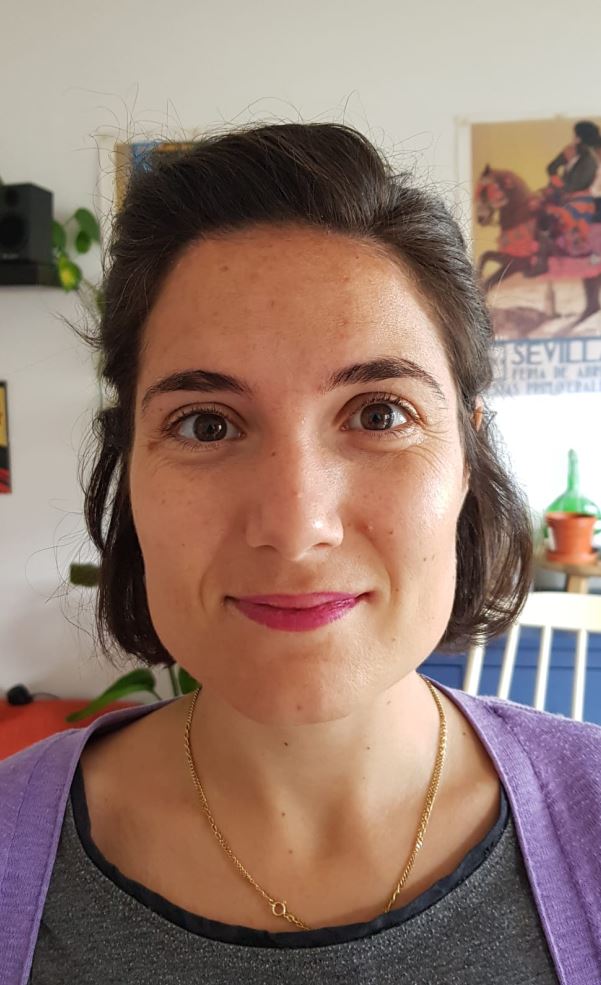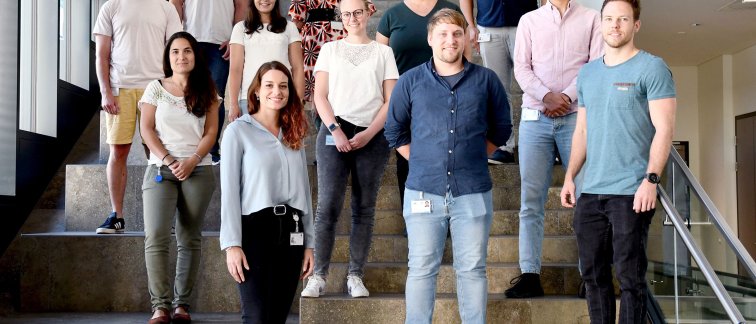In early 2022, Marta Bermejo Jambrina, postdoctoral researcher at the Department of Experimental Immunology at the Amsterdam Institute for Infection and Immunity, visited the group of Prof. Wilfingseder's at the Institute of Hygiene and Medical Microbiology at the University of Innsbruck. This work visit was made possible in part by the AII Work Visit Grant. During this visit, Dr. Bermejo Jambrina gained experience with human in vitro models. She used these skills for her research "Inhalation of Low Molecular Weight Heparins as Prophylaxis against SARS-CoV-2," which was recently published in the mBIO journal.
Dr. Bermejo Jambrina chose Prof. Wilfingseder's group for her exchange because they work exclusively with human in vitro models. "I already worked closely with Prof. Wilfingseder's group during my time at Amsterdam UMC, which made me interested in their capabilities. They designed and developed an innovative highly differentiated human 3D cell culture model, as well as lung organoids, becoming one of the leading groups in Europe," Dr. Bermejo Jambrina said. Using this human 3D cell culture model, it is possible to study viral routing. Dr. Bermejo Jambrina: "This benefits our lab, as we are interested in the transmission and movement of viruses. The knowledge I have gained can be applied in the context of drug testing and the search for new therapeutic approaches."
Potent inhibitor of SARS-CoV-2
Dr. Bermejo Jambrina had a higher goal she wanted to achieve with her visit. Within her research group, Prof. Geijtenbeek's group, they identified a potent inhibitor of SARS-CoV-2 infection. This potent inhibitor is called LMWH enoxaparin. Dr. Bermejo Jambrina: "LMWH enoxaparin is a specific type of sugar often used in the clinic as anticoagulants, better known as blood thinners. Giving people LMWH enoxaparin makes it harder for SARS-CoV-2 to attach to Heparan sulfates on the cell surface, a process necessary for SARS-CoV-2 infection."
The human in vitro 3D model of Prof. Wilfingseder's group was perfectly suited to investigate the mechanism and inhibitory effect of LMWH enoxaparin on SARS-CoV-2 and its "Variants of Concern" (VoC: the different known variants of SARS-CoV-2). Dr. Bermejo Jambrina: "Since the beginning of the pandemic, the emergence of variants that posed an increased risk to global public health has led to the characterization of VoC’s to prioritize global monitoring and research. Also for our research project, we are looking at the impact of LMWH enoxaparin on different VoCs."
Dr. Bermejo Jambrina: "By using a human 3D lung model and nasal epithelial cells from volunteers, we were able to demonstrate that LMWH enoxaparin can be used to block the attachment of SARS-CoV-2 to nasal cells." This means that through this collaboration the research group of Prof. Geijtenbeek and Prof. Wilfingseder have found a suitable candidate, namely LMWH enoxaparin, for the prevention of SARS-CoV-2.
Plans for the future
Dr. Bermejo Jambrina: "If it is proven during our follow-up study that LMWH enoxaparin is safe to use, cost-effective, and in addition can be packaged in a nasal spray, this will make it an ideal preventive therapy for people who cannot benefit from vaccination or who need an extra layer of protection against SARS-CoV-2."
Let's look a little further into the future: since LMWH enoxaparin interferes with a general mechanism of infection that occurs in several other viruses besides SARS-CoV-2, this nasal spray could help prevent not only SARS-CoV-2 but also other respiratory viruses. Dr. Bermejo Jambrina: "Therefore, in the next phase of this project, we will test the preventive treatment with LMWH enoxaparin against influenza and similar viruses. If the results hold up, we will expand our study into a clinical trial."

with a new model to study COVID-19 treatment. I cannot wait to put the new techniques I have learned in Austria into practice in the Netherlands.'
Success story
This finding was made possible in part by the AII Work Visit Grant that Dr. Bermejo Jambrina received in early 2022. Dr. Bermejo Jambrina: "I would recommend it to anyone to apply for this grant. This is the kind of grant that leads to successful research proposals because you combine the knowledge of different groups. That is something unique that you cannot get done easily otherwise. In addition, it is also beneficial to you as a person: you get more networking opportunities and your research is put in the spotlight by the grant."
For more information contact Dr. Marta Bermejo Jambrina or read the scientific publication in mBIO journal.
Read our recently published SARS-CoV-2 articles:
Substantial difference COVID-19 infections fall 2021 vs. 2022 (November 2022)
Booster vaccinations prove useful for people with transplanted kidney (November 2022)
Corona drug for people with immune disorders elicits rapid resistance (August 2022)
Text: Esmée Vesseur

